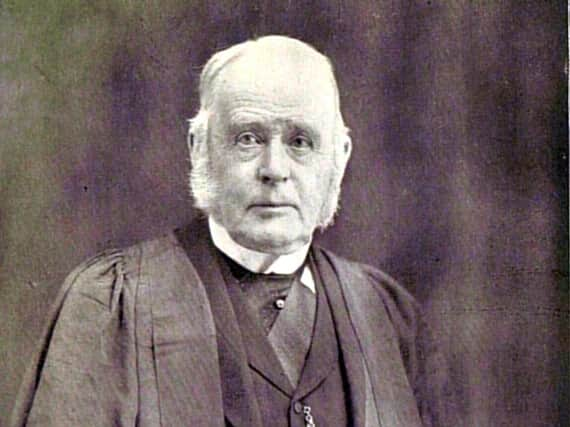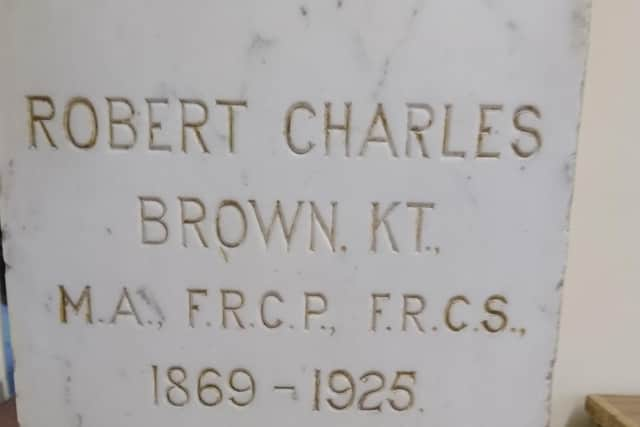How Preston fought back against previous epidemics


Preston’s history contains many periods when highly infectious diseases took hold. There are echoes of some of our current experiences in the past. These include isolation, temporary hospital wards, the deaths of medical staff, disinfection and, at times, despair.
The Friends of Winckley Square (FoWS) public activities are on hold during the current pandemic. The new website https://www.winckleysquarepreston.org/ has proven very popular and there are more profiles of famous former residents in the pipeline.
Advertisement
Hide AdAdvertisement
Hide AdIn the meantime some Friends are continuing their research work and have been looking at how Preston was affected by medical emergencies in the past. One former resident was Dr (Sir) Charles Brown (1836-1925). Andrew Walmsley has researched Dr Brown’s life for FoWS and Andrew’s profile of Dr Brown will be added to the ‘Heritage’ section of the website when life returns to normal.


Robert Charles Brown’s parents lived on Winckley Square. His father was a surgeon. He was born in October 1836. He lived most of his life at the house in which he was born, now 27 Winckley Square. He died there on November 23, 1925. We are fortunate to have a key source of evidence for his life in the reminiscences Dr Brown wrote when he was in his 80s; ‘Sixty-Four Years a Doctor’.
His biography includes his experiences of various epidemics during his career in Preston. It also records some of the major breakthroughs in medical knowledge which transformed his work and the lives of those he treated.
A major outbreak of ‘Typhus’ occurred in Preston in 1862. Conditions in the town at the time were desperate. The Lancashire Cotton Famine lasted from 1861-1865. The American Civil War led to the disruption in the supply of raw cotton and had a massive impact on the Cotton trade. Anthony Hewitson in his ‘History of Preston’ (1883) describes it as:"The most serious and extensive season of distress through which Preston has ever passed…the cotton trade of Lancashire was paralysed by it."
Advertisement
Hide AdAdvertisement
Hide AdThe unemployed were dependent on ‘Poor Relief’. In 1862 over 22,000 people were receiving cash pay-outs to support them through the crisis. The Corporation employed able bodied men in stone crushing, road building, sewage construction and public buildings. This included work on the Watling Street Workhouse which began in 1865. Some 2,000 women and girls
were enrolled in sewing schools producing goods the Corporation would otherwise have had to buy.
The poverty was appalling and in 1862 typhoid struck. It was not until 1880 that Karl Joseph Eberth identified the bacillus which was the cause of typhoid. It was another 16 years before a vaccine was developed. Typhoid was a permanent threat to the health of the town.
There are clear parallels between the 1860s and our present situation. Doctors knowing that the disease can be fatal but having no cure for it. Temporary hospitals, then as now, were erected.
Advertisement
Hide AdAdvertisement
Hide AdCharles Brown recounts how Preston Corporation put up a temporary fever hospital. Within a very short time he tells us that Dr Ridley, the Medical Officer in charge, and 16 nurses were all dead from the disease.
Anthony Hewitson in 1883 described how special kitchens were established for the ‘sick poor’ distributing nearly 120,000 portions of ‘meat and beef tea’ and that Miss Jane Parr, sister of the Vicar of Preston, led the work only to die from sickness.
Ironically the edition of the Preston Chronicle of 29 November 1862 reported her death in the same column as it announced Dr Brown’s election as a fellow of the Royal College of Surgeons. The report on Miss Parr includes the phrase: ‘She has fallen a martyr to her labours in the cause of charity’
Charles Brown, much later in life, was Medical Officer for the London and North Western Railway Company. He was called to Preston station in May 1893 and shown a man, James Dumpy, who had arrived on the train from Fleetwood. The man had smallpox. Smallpox is one of only two viruses to have been eradicated. It is no longer a threat to us but in its time it wreaked havoc. Even in the 1960s it was responsible for the deaths of millions globally.
Advertisement
Hide AdAdvertisement
Hide AdDr Brown walked with the man to his neighbour on Winckley Square, Dr Pilkington, the Medical Officer of Health in the town. Charles Brown asked for a ticket so the man could be admitted to the Ducker Hospital which was temporary and had specialised in smallpox. Dr Pilkington explained that he Ducker no longer had staff so there was no way to admit him. Dr Brown rang the Workhouse Master and asked him to admit the smallpox sufferer. The Master refused on the orders of the Poor Law Guardians. So Dr Brown went to the police station and told the Inspector of his dilemma. The Inspector sent a sergeant to persuade the Master of the Workhouse to take the man. They travelled in what Dr Brown called the "cab for infectious diseases", the official title of which was ‘The Urban Sanitary Cab’. The man was admitted!
In another echo of our current pandemic the train "in which the man had travelled from Fleetwood was shunted into a siding and all the carriages comprising it were disinfected."
We all look forward to the day when an announcement like this from 30th August 1888 in the Lancashire Evening Post appears in the current Lancashire Post:
"Mr. Satterthwaite further added that the epidemic was now almost stamped out. Dr. Pilkington, the Medical Officer, also gave cheering account, and, in answer to a question from Alderman Hibbert said that as there were no cases of smallpox remaining in the town the Free Library, the Museum, and the Picture Gallery might be opened with safety. Alderman Hibbert then announced, with the hearty approval of the Council, that all these institutions would be thrown open on Saturday."
Advertisement
Hide AdAdvertisement
Hide Ad* Ducker, an American company, produced pre-fabricated buildings made of wood. These included hospitals and barracks which could be erected at short notice. The Preston Ducker hospital was bought by Preston Corporation, who paid £333. 9s 1d to the Ducker Portable House Co. It was an emergency purchase in the light of another smallpox outbreak. It was this hospital Dr Brown was referring to only to discover it was by then unstaffed. It was located on the eastern side of Moor Park. The Lancashire Evening Post of August 23,1890 reported: "When the epidemic passed away, the hospital was taken down, disinfected sectionally and stored away."